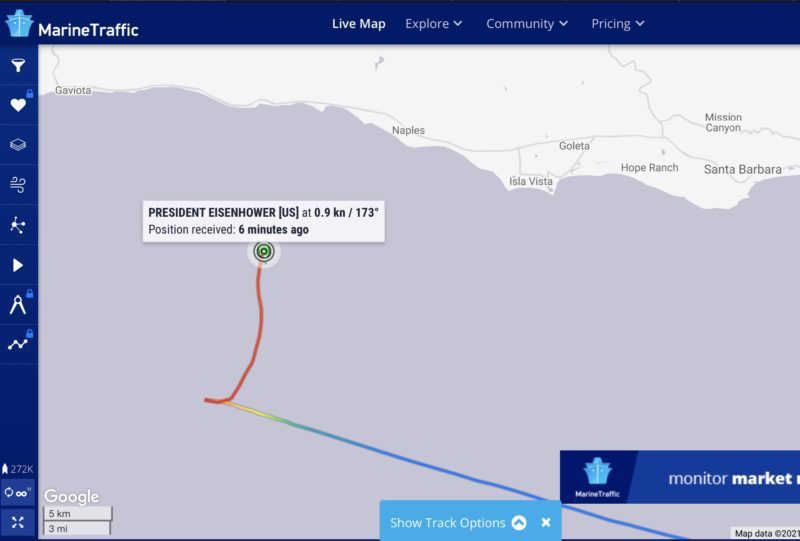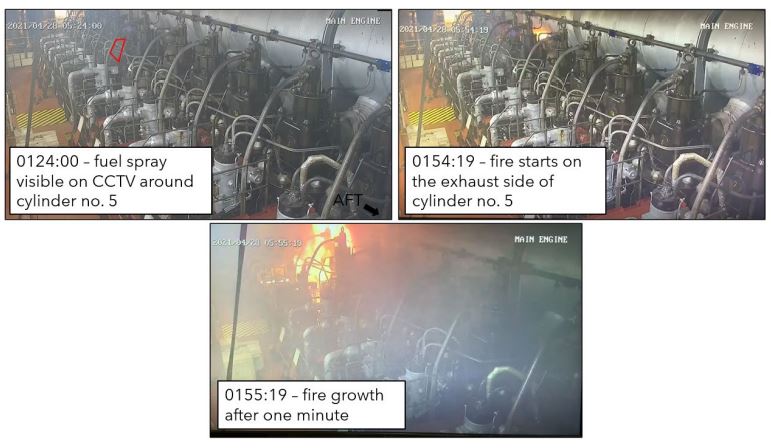Middle East Conflict Drives Spike in War Risk Insurance Costs
U.S. and Israeli attacks on Iran and Tehran's reprisals have doubled the price of insuring shipments to the Middle East and the Gulf in the last week, insurance sources said on Monday.
An incorrectly installed section of main engine fuel oil return tubing led to an engine room fire aboard a containership off the coast of Santa Barbara, California, the National Transportation Safety Board said Tuesday.
The fire aboard the M/V President Eisenhower broke out April 28, 2021 as the ship transited through the Santa Barbara Channel on a voyage to Oakland, California with a crew of 22.
The crew extinguished the fire using the engine room’s fixed carbon dioxide fire-extinguishing system. As a result of the fire, the vessel lost propulsion and drifted for several hours before being towed to the Port of Los Angeles. We were tracking the ship as it drifted towards shore and was subsequently rescued by a tug.
No pollution or injuries were reported, but damage to the vessel totaled an estimated $8.22 million.

Marine Investigation Report 22/15 details the NTSB’s investigation of the incident.
A crewmember on watch noticed smoke coming from an open engine room hatch early in the morning on April 28. Two crewmembers donned firefighter outfits and attempted to use portable fire extinguishers to quell the fire. Realizing the fire was “too much,” the captain decided to release carbon dioxide into the engine room.
The day before the vessel’s departure, the second engineer installed a new section of steel fuel oil return tubing for the main engine. A post fire examination showed that a compression fitting on the end of the newly installed section of fuel return tubing had disconnected, causing the ultra-low sulfur diesel fuel oil the engine was burning to spray. CCTV footage from the vessel showed diesel oil spray about 30 minutes before the fire started. Within one minute after the fire started, cardboard and wooden boxes of spare parts, which were stored one deck above the main engine and next to the auxiliary boiler, caught on fire.

Investigators found that an unshielded and uninsulated exhaust valve compensator flange acted as an ignition source for the spraying diesel fuel. An examination of the disconnected fuel oil return tubing and failed compression fitting revealed that the compression fitting’s sealing ferrule was not sufficiently swaged to the steel tubing.
The NTSB determined the probable cause of the engine room fire was a crewmember insufficiently swaging a compression fitting ferrule during the installation of fuel oil return tubing for a main engine’s cylinder, allowing an end of the tubing to disconnect and spray fuel oil onto a nearby unshielded and uninsulated cylinder exhaust component.
NTSB further identified two lessons learned from this investigation:
Marine Investigation Report 22/15 can be found on the NTSB website.

Sign up for gCaptain’s newsletter and never miss an update

Subscribe to gCaptain Daily and stay informed with the latest global maritime and offshore news


Stay informed with the latest maritime and offshore news, delivered daily straight to your inbox
Essential news coupled with the finest maritime content sourced from across the globe.
Sign Up